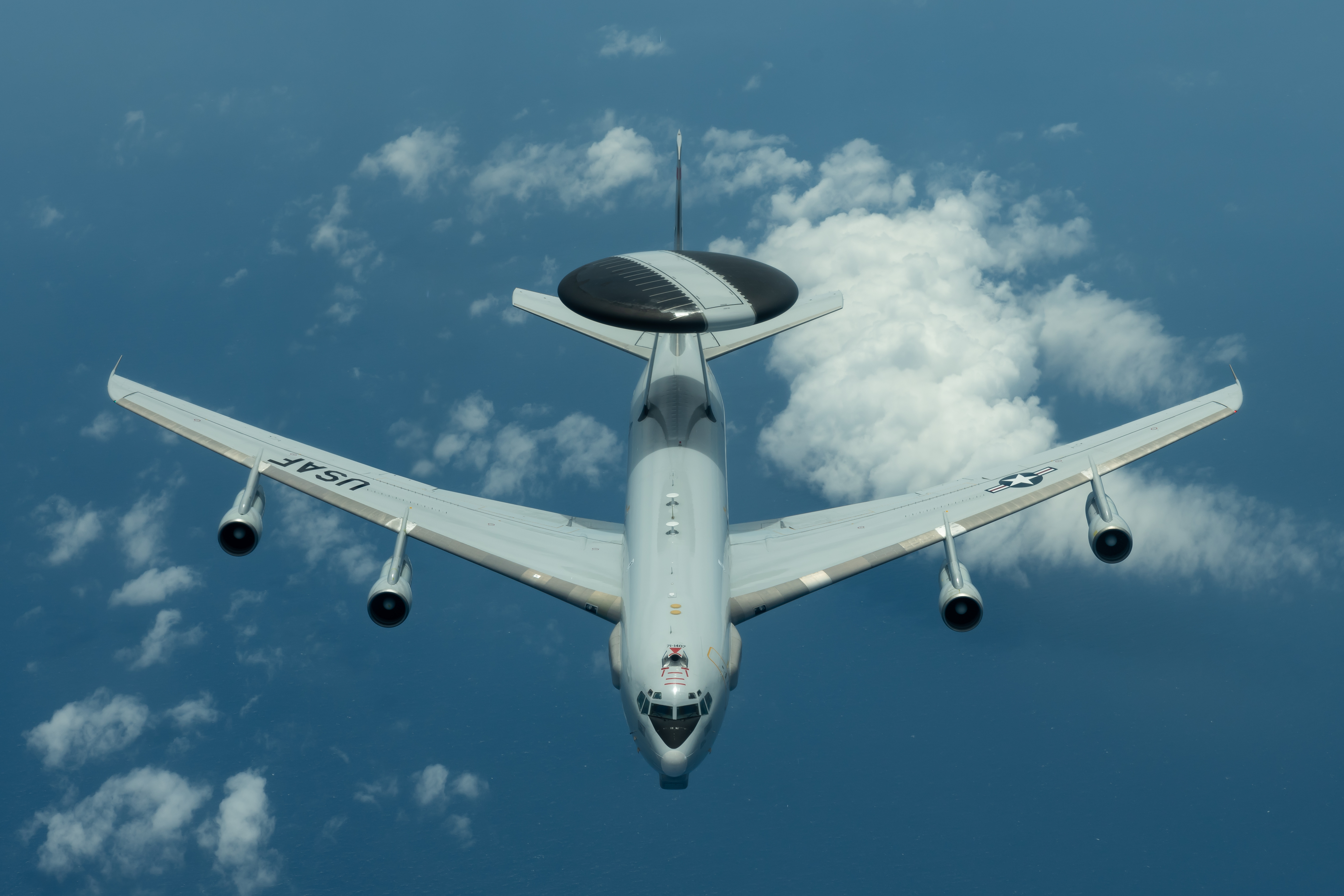
The 961st Airborne Air Control Squadron (AACS) of the 18th Wing at Kadena Air Base, Japan, currently operates the E-3 Sentry aircraft where teams of around 20 to 24 Airmen control air spaces throughout Indo-Pacific Command’s area of responsibility.
Their mission is to provide airborne command and control, long-range surveillance, detection and identification information in support of a free and open Indo-Pacific.
The 961st’s aircraft of choice, the Boeing E-3 Sentry is known to Airmen as the AWACS (Airborne Warning and Control System). Its most notable feature is the 30-foot rotating radar atop its rear fuselage known as the rotodome. The rotodome’s function is to collect and relay critical information to surrounding U.S. and allied aerial assets.
Inside the aircraft, teams divide into four sections consisting of flight deck members, technicians, controllers and the surveillance team.
Members of the flight deck are responsible for the overall conduct of flight operations and placement of the aircraft. The technicians operate the aircraft mission systems and stand ready to repair any malfunctioning equipment during flight. The surveillance team maintains a real-time air picture that is shared with multiple partners working in the theater. Controllers use that air picture to make tactical decisions when directing friendly aircraft.
The 961 AACS was established in November 1940 as a B-17 Flying Fortress Heavy Bombardment squadron organized at Fort Douglas, Utah but assigned to the GHQ Air Force Northwest Air District at Geiger Field, Washington. Throughout its existence, the squadron has had many names. It was stationed at 10 different bases aboard five different airframes including the B-24 Liberator, B-29 Superfortress and the C-121 Constellation. The 961st has flown the E-3 Sentry since 1979 and was assigned to the 18th Wing on Okinawa in 1991.